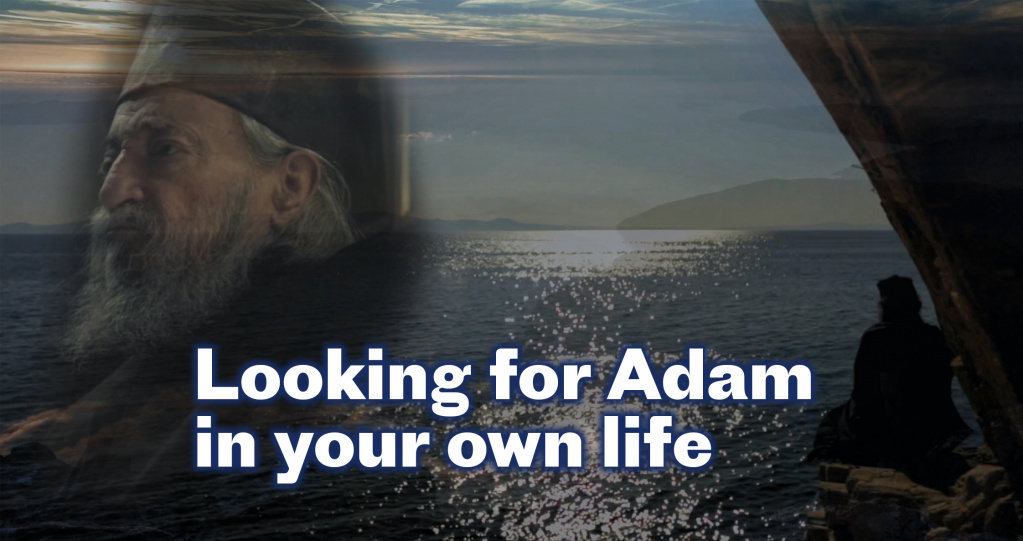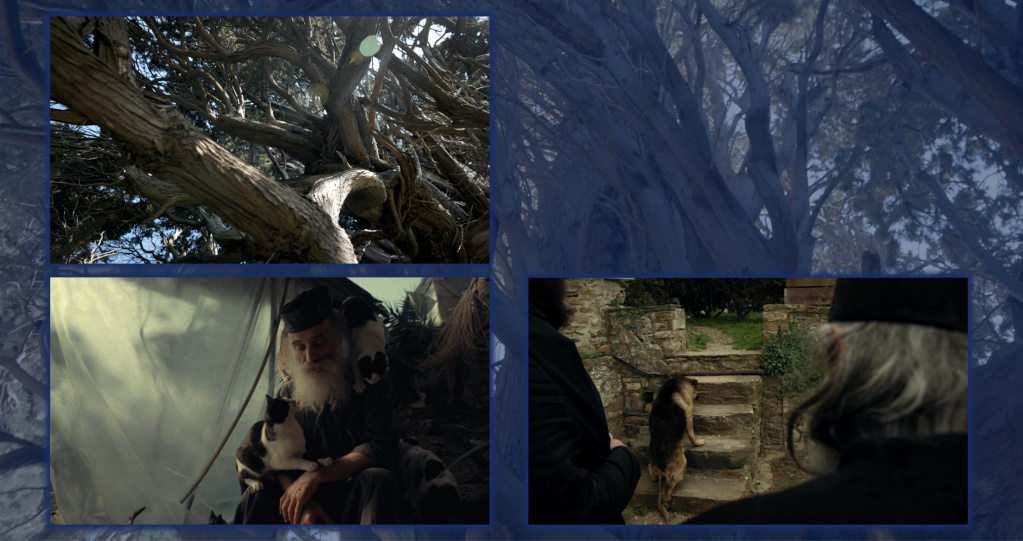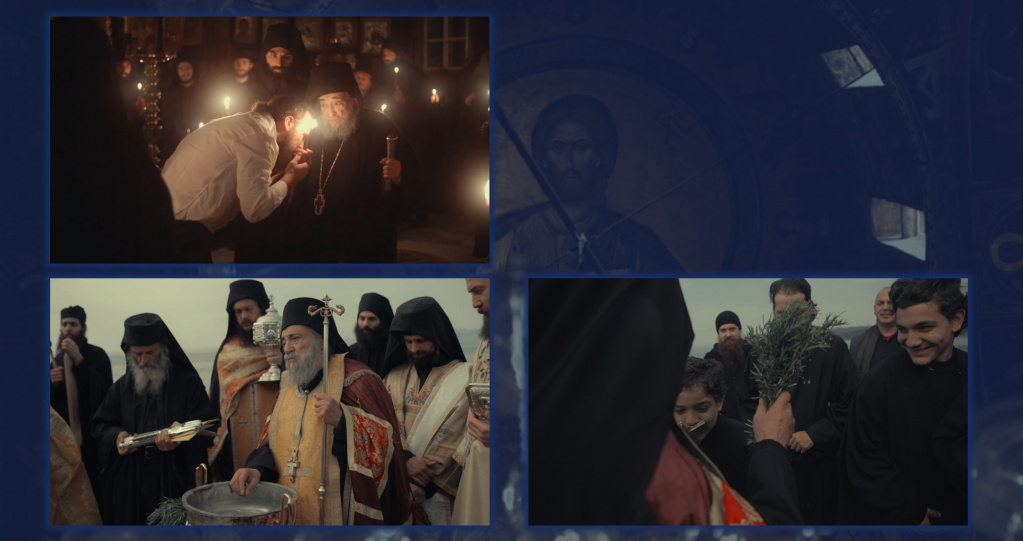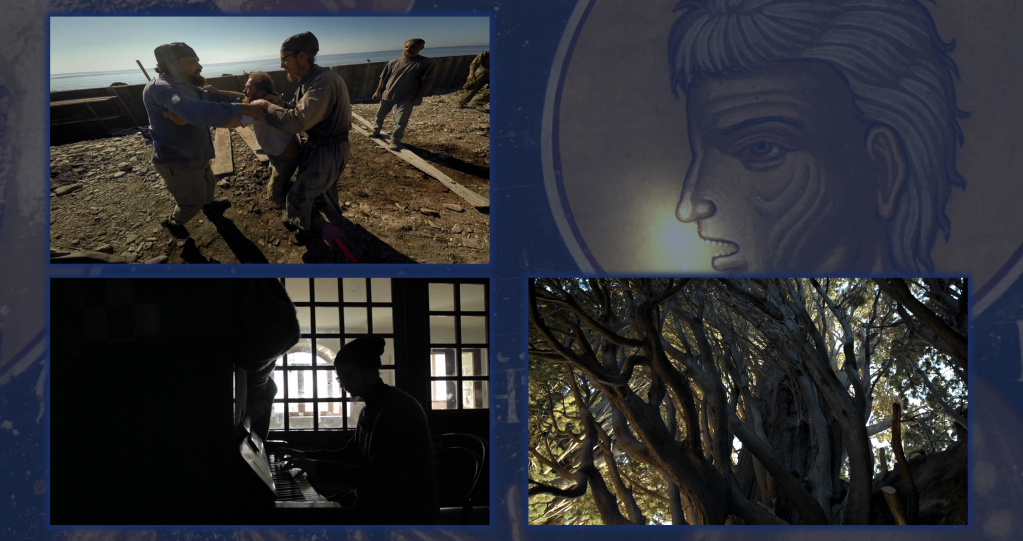Looking for Adam in your own life

It is no easy task to make a video film about Mount Athos that would surprise expert viewers. Non-experts will probably never choose to see it. Those who are interested in the history of the Holy Mountain might have been there many times; they might have walked the length and breadth of Athos along the pathways laid by monks in the woods and mountains and heard all the legendary life stories of the saints. They would watch any film about Athos with pleasure. Some episodes would bring out their smile, others – recognition of places or even of the faces of monks flickering in the frames showing them at service. Ordinary lay people would hardly go to such lengths. They usually have no time to spend even on a new serial. There exists such a stereotype. The authors of the film “Where are you, Adam?”obviously want to break it by their film as such and by numerous interviews. To a certain degree they are being successful.
I must say that I have been to Mount Athos many times including the Dochiar Monastery where the film is set in. The first frames of the film show the well-known lemon tree at the entrance to the monastery. The harvesting of its fruit takes place shortly before Easter and in autumn. The thick peel of the fruit is so rich in essential oils, that after peeling a lemon, your hands are covered with a fragrant film. The fragrance will last for many hours. It is not allowed to pick the fruit directly from the tree. You may pick up only windfalls. Reminiscences are moving fast in your head bringing you over to the shady gazebo under the guard of archangels at the entrance to the monastery. As usual, you are disposing yourself to a pleasant viewing. Suddenly an absolute cognitive dissonance disturbs your vision: there appears a monk with a pack of dogs circling him. It is dogs’ reign indeed! There are big dogs, mangy stray dogs and absolutely glamorous tiny ones. But Athos is the Land of Cats! Everyone knows this. Something is not right here. In fact, the cats and their reign will appear by the middle of the film. As for now, there is a gut-wrenching scene with a lame crippled dog: the poor thing is unable to climb three steps up, it is trying its best, and the monk is helping by pushing it up. Physically, he makes it possible for the dog to get to the bowl with food, while his words give us a chance to come in touch with the wisdom of Athos elders, the wisdom of age-old traditions and faith.

Director Aleksandr Zaporoshchenko and Producer Rev. Aleksandr Pliska have a good knowledge of Athos, and their knowledge of world documentary cinematography is also good. They position their film as a universally orthodox creation which is boundless. They organized film-screening sessions in different corners of Russia, Ukraine and Belarus, and in Crimea as well. It seems as if right away they want to say that their film is not about one particular country, not about theological disputes or concrete political situation, but theirs is a film about human souls and fundamental values of the Orthodox believers. It is about Resurrection and Repentance. Jean-Luc Godard once said that cinematography was a 24frames per second truth. What truth are the authors of the film searching for? The answer to this question is not exactly linear and it is there in the heads, words and looks of the film’s starring characters – the Dochiar monks.
It is believed that the Mother of God is protecting Athos against troubles and misfortunes with her own veil. This film helps you realize that this veil is woven from thousands of the monastic fates of those who have lived praying on this Holy Mountain for many years. Each thread in it is a soul. Here the camera snaps up a monk-beekeeper, then a fisherman, an icon painter, a baker and a surgeon. And you become aware that the Mother of God is just watching over while the monks are weaving the protecting veil with their labour and prayer. Every veil has its own specific ornament and pattern providing for its specific sacred value. Archimandrite Gregory (Zumis) is the golden thread in this ornament. Talk with him serves basis for the main semantic accents of the film.

As data journalists, the authors say in an interview that they “have made up nothing.” Geronda Gregory did not like an embellished monastic life and made-up stories about church. He did not like that in some lives of the saints their image is ‘polished,’ while their humanity is left in the dark. It would appear that they are walking on clouds. One might find many surprises in the film, which shows hegumen as a very sincere man. He cries in the heart-shredding scene of taking monastic vows. He speaks about Paradise and human destiny in a plain language amazing you, but later you understand that you are hearing a confession. Rev. Aleksandr notes that monks in Dohiar spoke about a new light shed on their hegumen in the film.

One should mention the artistic component of the film. The Ukrainian documentary is undergoing some kind of a boom. There are many young directors and acknowledged brilliant masters in the country. “Adam” is a reasonable author’s montage, but interactive and intellectual. The director does not want to impose anything on the viewer. Everyone can draw conclusions by himself. The major action will be unfolding in the viewer’s mind. This is a film about self-searching people and at the same time for self- searching people. Most scenes were shot in one take, but what are these takes as the real life is shown with all its acute feelings and emotions. While seeing this film, you may recall “Bells from the Deep” “documentary” by Werner Herzog about popular belief in Russia in the 1990s (Chumak, Vissarion, etc.). I placed the word “documentary” in inverted commas deliberately, because the boundary line between motion pictures and documentaries is melting away in Herzog’s film. There is a scene showing pilgrims crawling around on their knees on the ice in prayerful ecstasy trying to catch a glimpse of the lost city of Kitezh. This is a staged scene as there were no pilgrims around and Herzog hired two drunks to do what he wanted. A "documentary” indeed!"
There is nothing of the kind in “Adam.” Take, for instance, the scene of the monks fighting, which would seem a joking game at first, but then you understand that everything was in earnest. Is it really possible?
“Yes, anything is possible. Looking deep into one’s soul, one will find all spiritual problems topical both for monastery on Mount Athos and city apartment,” said producer Aleksandr Pliska.

The style of Zaporoshchenko and Herzog concur in their paying attention to the landscape as a starting point. We see the bark of a tree and the cobblestone paved road, we hear quiet sounds of the sea to music of Chopin and Couperin played by a monk on the ages-old piano in the monastery. Where from has it come? Why the monk plays so beautifully? We might search for answers only within ourselves. We probably would find the right answers if we look closely at the scene with a dolphin cruising at the monastery’s wharf.
There is an education story in the film, but it is non-intrusive. Fr. Gregory says: “if we take our life as one hundred steps, then only three or five would be our own steps, as the rest are made by the Lord, but we must make these three or five steps ourselves. One of these steps might bring you to repentance. Why God has called Adam? Not because He did not know where Adam was. He called Adam to repentance.” This is the end of the wonderful story.

Another important thing to note is that the Greek world often suspects the Slavs in the wish to take in “primacy” in the Orthodox world. I would like to quote a review of the film given by a person whom I do not know, but it gets in line with my feelings I had while seeing the film.
“This is a film about the Greek whom we would like to have as a model. This is the Greek Orthodoxy which we adore. This is a film about the real man. The film is produced by the members of our (Russian) Church testifying to that we are not running after primacy, but stand for the purity of the faith as this great son of the Greek nation, elder Gregory (Zumis,) had done.”
